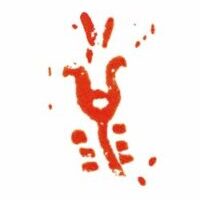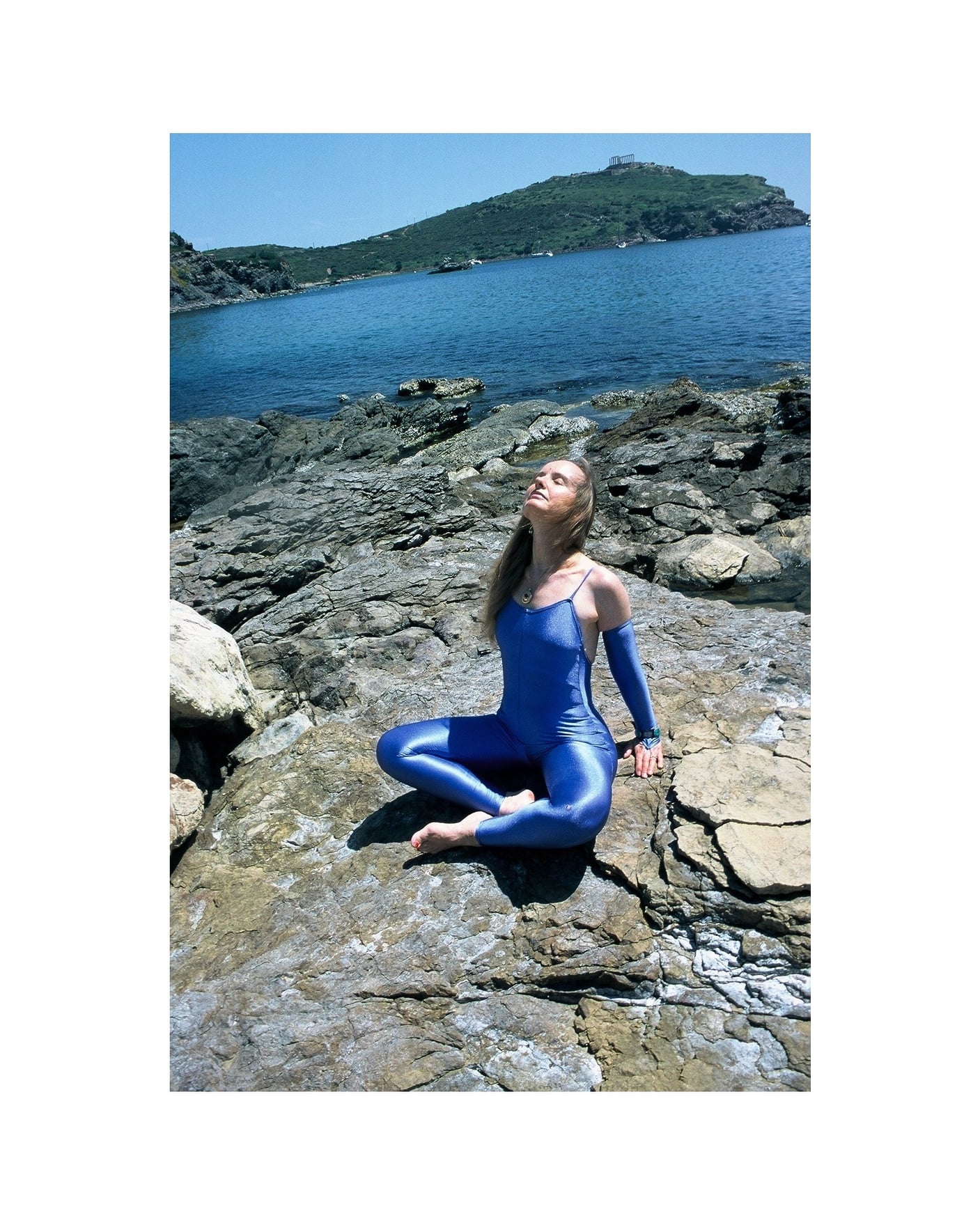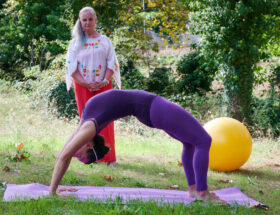Part 2
BREATHE DEEPLY AND EASILY
Don’t be afraid to experiment with breath. Pilates did!
Jerome Andrews taught us exercises with “sighing” breath, for releasing; holding the the breath out, to utilise the healing effect, of the *“still point” and deep, rich in breaths, followed by a soft, blowing, long, out breath. All of these are different and serve different purposes and intentions.
When we release the breathing diaphragm, we release the largest concentration of fascia in our body. This alone can result in relief from back pain.
Colour the breath. Fill it with intention. Breathing in power and energy. Breathing out tension, negative thoughts and judgements of our body.
Let go of the old. Draw in, the the new and the positive.
NEVER FORCE YOUR BREATH
Over time the muscles supporting your breathing system will strengthen. The tension patterns in the fascia of the breathing diaphragm will release and let go. The breath will naturally expand. Until then go with what is easy for you. Float on the breath.
USE YOUR BREATH INTENTIONALLY.
Breath is a conduit to filling each of your cells not just with oxygen, but with positive energy.
Here is an example to practice.
Today:-
Each time I breathe in I think.
“I breathe in energy.” I have practiced this when coming to an ashtanga practice, seemly exhausted, and not knowing how I will get through it. It works! I was so surprised at my practice that day. I started feeling by I might not get through it and finished with the glow and satisfaction of a deep session. I can’t remember what happened exactly but it was good.
“I breathe in light.”
“I breathe in strength.”
“I breathe in clarity.”
“I breathe in knowledge.”
“I breathe in change.”
“I breathe in perfect leg alignment.”
Make an ever expanding personal list and chose one to focus on.
The out breath is a letting go process.
“I breathe out tiredness.”
“I breathe out previous negative thoughts about my body.”
“I breathe out and I surrender more to gravity.”
“I breathe out, and use my sites of support, to release my joints, and keep them relaxed.”
“I breathe out and feel my spine long and relaxed.”
FLOAT ON YOUR BREATH. FLOAT ON HAPPINESS.
BREATHING EASILY IS FREEDOM. FREEDOM OF EXPRESSION.

HAVE YOU OBSERVED PEOPLE WITH SCOLIOSIS, KYPHOSIS DO NOT BREATHE EASILY?
Using the breath well will help these students overcome their problems.
PEOPLE WHO ARE ANXIOUS MAKE THEIR BREATHING SMALL.
It is like they want to hide and to make themselves as small as possible. Deep, regular breathing gives a sense of calm, peace and focus.
THE BREATHING IN THE FOOT WORK ON THE PILATES REFORMER PLAYS A HUGE ROLE IN HEALING BACK PAIN.
I chose even breaths. The in breath lasts as long as the out breath. The in breath is strong as the out breath. It is like a circle. I find the Ujjayi breath from yoga is the most effective. Students’ breathing rapidly improves as does their focus. It is a strong practice.
Variation 1
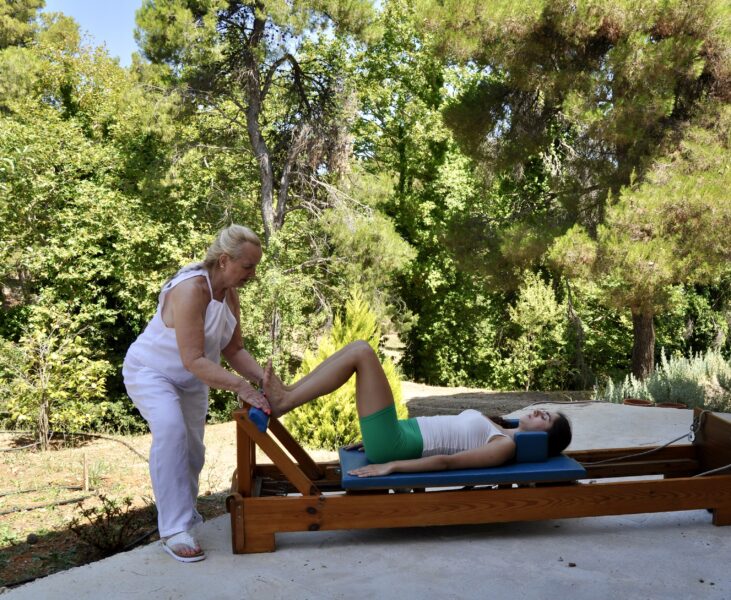
Let’s chose a breath pattern for our foot work. Let’s choose BREATHE OUT to push out and BREATHE IN to come down.
I know this is the opposite way to the way to the way it is often taught.
Ok. What does this way offer?
When you BREATHE OUT the breathing diaphragm goes up. This gives you more space, internally, to energise the muscles of the pelvic floor for support.
When you BREATHE OUT the belly naturally drops. Take advantage of nature and allow the deep abdominal muscles to drop and engage, naturally, without tension.
When you BREATHE OUT it is a process of surrender and therefore as we travel back we can enhance the sense of surrendering the back of the body to gravity.
Once again, THIS IS NOT PUSHING THE BACK DOWN.
Surrendering the upper back in this way, magically releases, the habitual tension, in the shoulders and upper back. Watch magic happen!
So what does the IN BREATH on the way down offer us?
We can learnt use THE IN BREATH in such a way that we emphasise filling the back of the lungs. This helps us once again to come into touch ever more deeply with the back of the body’s connection with the surface of the bed and the surrendering to gravity.
THE IN BREATH has a sense of suspension. Dancers use it, to seem to hover in the air, at the height of a jump.
THE IN BREATH naturally creates more space between the last rib and the iliac crests. It literally creates more space in the spine.
Expansion.
We can consciously use this to open up the spaces between each vertebra.
Variation 2.
CHANGING THE BREATH TO THE OTHER WAY ROUND
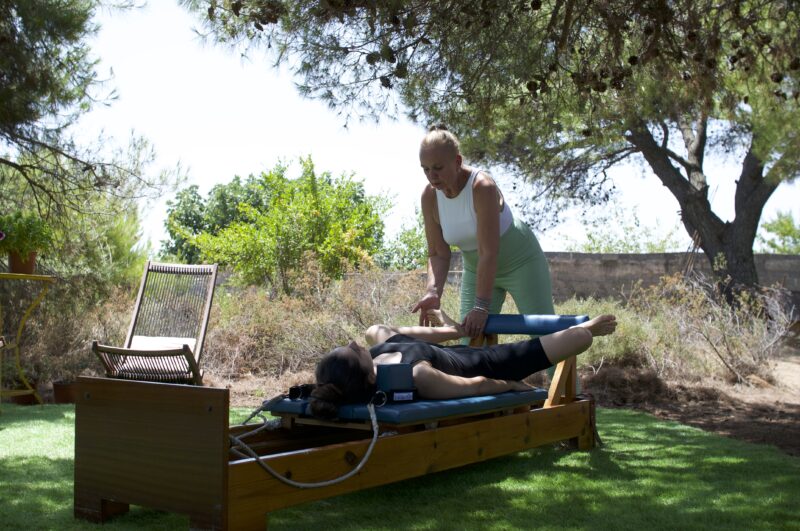
CHANGING THE BREATH TO THE OTHER WAY ROUND is not wrong.
It offers the feeling as you push out of filling the back of the lungs and emphasising the connection with the back of the body to the surface of the mat, of being supported, of taking in energy.
The out breath on the way down can be used to release tension in the joints, and be more relaxed.
WE NEED TO BE RELAXED TO BREATH WELL.
I just prefer the first way. I can get more juice out of the exercise.
Variation 3.
WHAT IF WE USE MORE BREATHS?
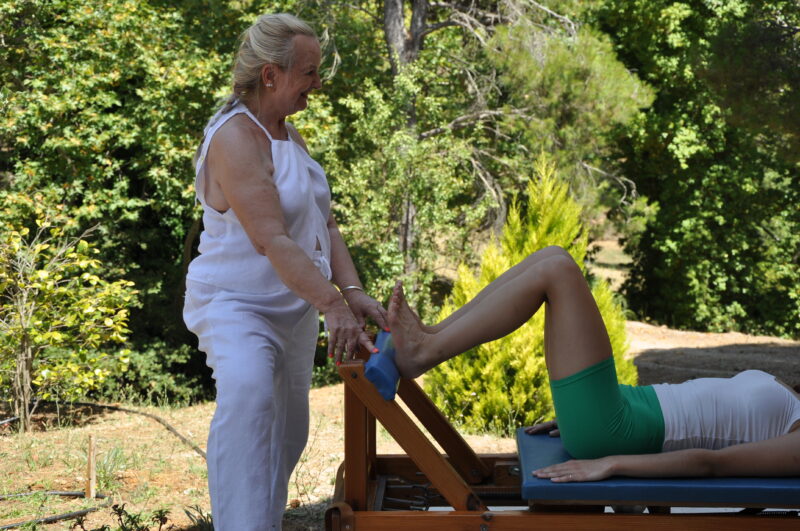
Aaaa this is my favourite way:
BREATHE OUT to push out. Read all the notes above and from the previous blog.
BREATH IN AT THE TOP OF THE MOVEMENT AND STAY.
Visualise a line of light extending back in the space above the crown of the head. ( The point where the sutures meet, about one third back from the hair line, the place that is soft on a baby.)
Our imagination is a powerful tool and just doing this will create more space in the spine.
Be careful not to change the position of your ankles.
BREATHE OUT. STAY WHERE YOU ARE.
Feel like you are hanging from that line of light all the way down to your toes, arches or heels (depending on which position of the feet you are using).
Consciously release any tension you may have mistakenly placed in the hip joints.
If you are working in parallel. Visualise the angle of your thigh bones. Check this out in your favourite anatomy book! Many, many, many of of us carry a mistaken image of our thigh bones in our psyche.
Double check if your tail bones are released, the end of your spine. This can result is a deep pain relief at the base of the spine and a widening at the back of the pelvis.
BE PREPARED TO ACCEPT A NEW SENSATION IN YOUR BODY.
It can be a bit scary.
BREATHE IN. THE MACHINE WILL STAY WHERE IT IS for the very first part of the movement to travel down.
Careful not to change your ankles if you are on the toes.
Continue to feel like the line extending from the crown of the head is being pulled out into the space behind you. As our beloved Bonnie Bainbridge Cohen says “space has magnetism”.
Careful not to accidentally tense any part of the spine.
The machine will stay for the first part of the movement BECAUSE YOU HAVE LENGTHENED AND CREATED MORE SPACE IN THE SPINE.
You will get taller with each repetition.
You will feel a pleasant opening in the front of the hip joints which is super therapeutic.
Follow the instructions above and in the previous blog to come down.
REMEMBER WHEN YOU GO TO PUSH OUT AGAIN YOU WILL BE IN A NEW POSITION OF THE BODY. BE CONSCIOUS, AWARE AND RESPOND ACCORDINGLY.
This is why the Pilates method does not have many repetitions.
Each time is different.
Each repetition evokes further change.
Just in case you missed it this is the link for part 1. https://jennycolebourne.com/the-foot-work-on-the-pilates-reformer-is-therapeutic-for-back-pain/
These are the links to some You Tube videos about foot work on the Reformer that you may find interesting.
- “The Still Point” is a description used in Cranial Sacral Therapy. The body comes to a place of quiet, where the cranial rhythms stop. This can last a varying amount of time. The system spontaneously starts up again, often in a more balanced, easeful way.
During the “still point” the body can go into an unwinding process. The unwinding movements come from deep in the body, and can range from small and subtle, to quite large. They happen spontaneously and have nothing to do with the logical mind. It is important not to judge them because the results are always therapeutic/positive. “Still Points” can occur during movements or exercises. The Head Stand in yoga is said to bring you into this state. The 100s in Pilates, with the breath held out, as Jerome taught it, can lead us into a “still point”.
